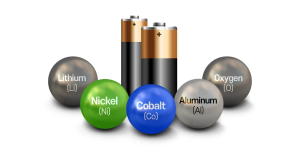Safety accident in lithium power stations

Overview
In recent years, with the continuous improvement of new energy installations, electrochemical power stations based on lithium batteries have developed rapidly in the power system. Lithium batteries have the characteristics of long discharge time, fast response speed, high conversion efficiency, free from natural conditions, and convenient large-scale applications. They are the main development direction of electrochemical lithium power stations.
However, lithium-ion batteries are with a low boiling point, and flammable organic electrolytes, and the material system has a high calorific value. After the battery or electrical equipment fails, it is easy to trigger the exothermic side reaction of the battery material, causing the battery to lose control of the heat. It may evolve into a major safety accident such as the combustion and explosion of the energy storage system. Fire or explosion accidents often happen, ranging from MW-level power stations to electric vehicles, which can cause serious economic losses and social impacts. Therefore, safety is the primary issue in the construction and large-scale application of lithium power stations. It is of great significance to explore the causes of safety accidents in lithium battery energy storage systems and to carry out research on the evaluation and early warning of energy storage system safety status, early warning, and accident risk management and control.

Analysis of the causes of accident in lithium power stations
Energy storage safety is a systematic problem. Through the analysis of safety accidents in energy storage power stations in recent years, the causes of safety accidents in energy storage power stations can be divided into four categories: battery body, overcharge abuse, operating environment, and management system.
The cause of accident: Battery factors
The sources of accidents induced by the battery mainly include defects in the battery manufacturing process and the safety degradation of the energy storage system caused by the aging of the battery.
Internal defects of the battery include the presence of metal contaminant particles in the pasting process of the battery, burrs on the edges of the positive and negative fluids, etc. These metal pollutant particles or electrode edge burrs will form dendrites as the battery ages and gradually evolve into micro internal short circuits, and gradually expand into hard short circuits. The local overheating of the short-circuit position inside the battery will gradually trigger the side reaction of the chain exothermic battery material. The side reaction triggered when the battery is overheated is an exothermic reaction that releases oxygen from the positive electrode metal oxide lattice. Even in the case of forced cooling or artificial sealing and isolation (no oxygen), it cannot effectively prevent the thermal runaway of the lithium-ion battery.
The cause of accident: Overcharge
The battery pack of a power station is usually composed of hundreds or thousands of cells in series and parallel. As the use time and the number of cycles increase, the inconsistency of the cells will gradually increase, and the charging process will still cause individual cells to overcharge. Overcharging will affect the electrical performance of the battery and cause structural changes in the positive and negative materials. If a battery with an initial defect or a high degree of aging is fully charged and discharged for a long time during actual operation, or even overcharged or over-discharged, internal defects will be amplified, eventually leading to the failure of the cell and the system, and even causing safety problems such as battery fire and explosion.
The cause of accident: Operating environment factors
The ambient temperature is critical to the safe operation of lithium-ion batteries. Low-temperature charging will also cause lithium electroplating on the graphite negative electrode, which will cause the negative electrode to be wrapped by metal lithium deposits, causing serious capacity loss, and even short-circuit in the battery when lithium dendrites grow and pierce the diaphragm. The high-temperature environment is not conducive to the heat dissipation of the battery. When the internal heat generation of the battery is greater than the external heat dissipation, its temperature will rise to an overheated state, which may trigger thermal runaway.
Active safety warning to avoid safety accident for lithium power stations
A large number of studies have shown that before thermal runaway occurs, lithium-ion batteries show a slow process, and related characterization indicators can become an important basis for a safety early warning of lithium power stations. Therefore, it is necessary and possible to start from the real-time evaluation and prediction of battery safety status and to develop an early warning system for battery safety risks based on the long-term evolution characteristics of the battery and operating conditions and other multi-factor coupling effects, and reduce it from the source through active prevention and control.
The safety warning of the lithium battery energy storage system can be divided into three levels of prevention and control: one is the early warning of slow-change failures, the second is the online identification of failure risk sources, and the third is the early warning of thermal runaway.
The safety active early warning of the power station can identify and locate the aging abnormal and degraded battery cell unit, and through appropriate maintenance or replacement measures, it can prevent the battery from developing to the stage of approaching thermal runaway.

Conclusion
The energy storage safety problem is a systemic problem. The occurrence of safety accidents often evolves and develops through the interaction of multiple factors, which eventually leads to the occurrence of battery abuse and thermal runaway. By actively identifying security risk sources online, the risk sources that induce security accidents can be eliminated in advance, and the risk of thermal runaway in the battery system can be reduced from the source. In the end, it is expected to realize the absolute safety of the “NO ACCIDENT” of the lithium power station.












I always emailed this web site post page to all my contacts, as if like to read it afterward my contacts will too.
I think the admin of this site is in fact working hard in support of his site, because here every data
is quality based information.
Wonderful beat ! I wish to apprentice whilst you amend your site, how could i subscribe for a blog web site?
The account aided me a acceptable deal. I were a little bit familiar of this your broadcast provided bright
transparent idea